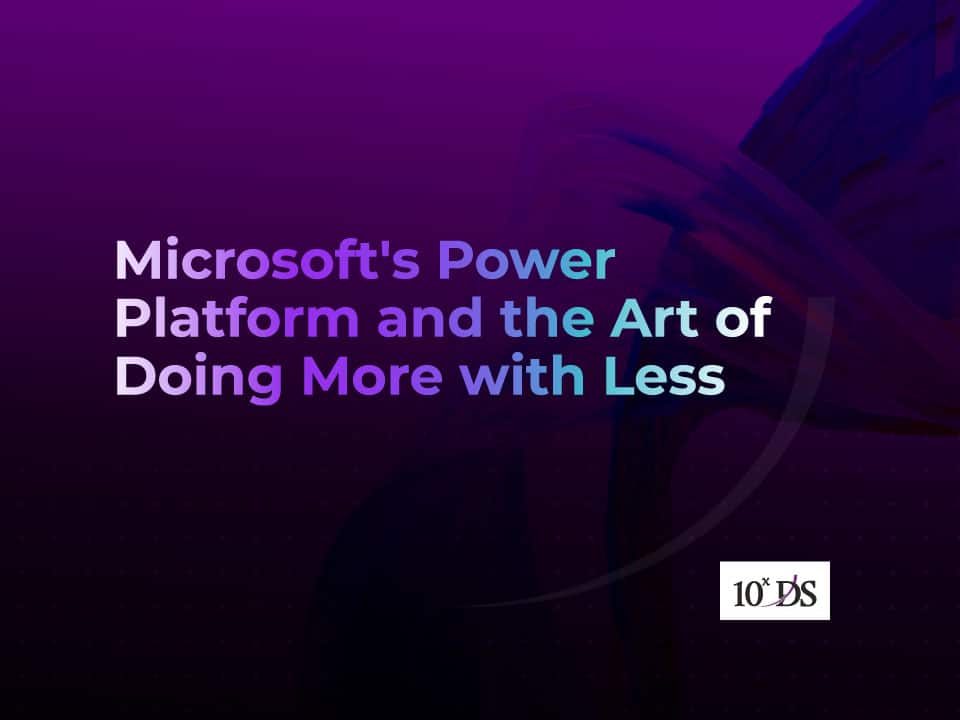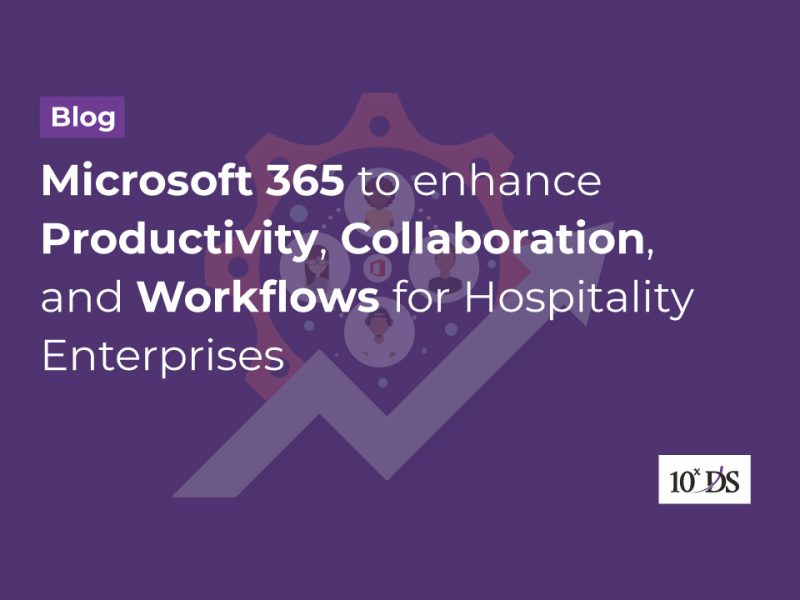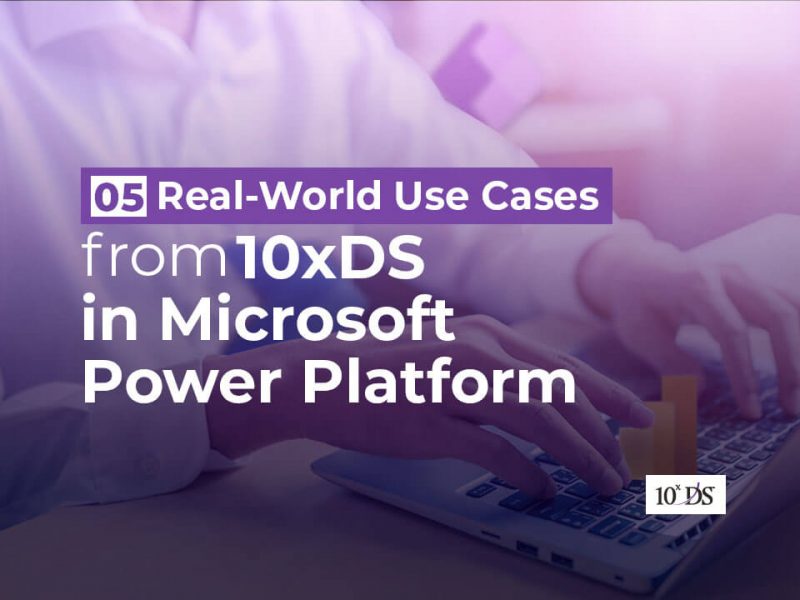
Microsoft’s Power Platform and the Art of Doing More with Less
“Doing more with less” is a concept that emphasizes maximizing productivity, efficiency, and effectiveness while minimizing resource consumption. It encourages finding innovative ways to achieve better outcomes with fewer resources, such as time, money, or materials. Technology has played a significant role in enabling individuals and organizations to do more with less throughout its evolution. Here’s a brief overview of how technology has facilitated increased productivity and efficiency. One of the most significant contributions of technology is automation. By automating manual and repetitive tasks, technology has freed up human resources to focus on more complex and value-added activities. Automation has revolutionized manufacturing, logistics, and various industries, leading to increased output while minimizing the need for extensive manual labour. Similarly, technology has greatly improved communication and collaboration capabilities. With the advent of email, instant messaging, and video conferencing, distance is no longer a barrier to effective collaboration. Teams can connect and work together in real-time, share information, and make decisions efficiently. Collaboration tools and platforms enable seamless teamwork and knowledge sharing, reducing the need for physical meetings and facilitating remote work. The evolution of technology continues to drive innovation and create opportunities for doing more with less. By leveraging the power of cloud computing, data analytics, mobile technology, and AI/ML, individuals and organizations can achieve higher levels of productivity, efficiency, and effectiveness in various aspects of their work.
Software providers come with range of tools to help organizations and individuals. Similarly, Microsoft aims to provide solutions that enhance productivity, streamline processes, and enable efficient collaboration, ultimately helping users accomplish more while optimizing resource utilization. Major components that help in the vision are:
1. Productivity
Microsoft focuses on developing tools that enhance productivity by enabling users to work more efficiently and effectively. Whether it’s through features like templates, automation, or intelligent suggestions, Microsoft’s tools aim to simplify tasks, save time, and enable users to focus on higher-value activities.
2. Collaboration
Microsoft emphasizes collaboration by offering tools that enable seamless teamwork and information sharing. By connecting people and facilitating real-time collaboration, Microsoft tools help individuals work together irrespective of their location, fostering productivity and innovation within teams.
3. Accessibility and Inclusivity
Microsoft is committed to ensuring that its tools are accessible to all users, regardless of their abilities or circumstances. By incorporating features such as assistive technologies, inclusive design principles, and accessibility options, Microsoft tools strive to empower everyone to participate fully and contribute their best.
4. Integration and Interoperability
Microsoft recognizes the importance of integration and interoperability in a digital ecosystem. Microsoft tools are designed to work together seamlessly, allowing users to leverage the power of multiple tools within a unified experience. This integration enables users to streamline workflows, eliminate silos, and achieve more with fewer barriers.
5. Cloud-powered Solutions
Microsoft’s cloud computing platform, Microsoft Azure, plays a crucial role in enabling users to do more with less. By leveraging the scalability, flexibility, and cost-effectiveness of the cloud, Microsoft tools and services empower organizations to optimize their IT infrastructure, scale resources as needed, and reduce overall costs.
6. AI and Machine Learning
Microsoft incorporates AI and machine learning capabilities into its tools to deliver intelligent insights, automation, and enhanced decision-making. By leveraging AI-driven features, Microsoft tools aim to automate repetitive tasks, provide personalized experiences, and enable users to extract meaningful insights from data, thereby maximizing productivity and efficiency.
Through these approaches, Microsoft envisions its tools as enablers of productivity, collaboration, accessibility, integration, and innovation. By helping users achieve more with less, Microsoft aims to empower individuals and organizations to reach their full potential and drive positive impact in their respective domains. Let us explore the tools and how it is adding productivity.
7. Microsoft Teams
Microsoft Teams is a collaboration platform that brings together chat, video meetings, file storage, and app integration into a single interface. It enables teams to communicate and collaborate in real-time, regardless of their location. By facilitating efficient communication and seamless collaboration, Teams helps to minimize time wasted on unnecessary meetings and emails.
8. Microsoft Outlook
Outlook is a powerful email and calendar management tool. It offers features such as email organization, scheduling, task management, and integration with other Microsoft tools. With Outlook, users can prioritize and manage their emails, appointments, and tasks effectively, ensuring better time management and increased productivity.
9. Microsoft Azure
Azure is a cloud computing platform that provides a range of services for building, deploying, and managing applications and infrastructure. Organizations can leverage Azure to optimize their IT infrastructure, scale resources as needed, and reduce costs associated with hardware, maintenance, and management.
10. Microsoft OneDrive and SharePoint
OneDrive and SharePoint are cloud-based storage and collaboration platforms. They allow users to store, share, and collaborate on files and documents securely. These tools enhance collaboration, streamline document management, and reduce the need for physical storage, ultimately leading to increased productivity.
11. Microsoft Power Platform
It is a suite of low-code/no-code tools designed to help individuals and organizations achieve more with less effort and resources. It empowers users to build custom business applications, automate workflows, analyze data, and create interactive reports and dashboards. Here’s how the Power Platform enables doing less with more:
- Power Apps: Power Apps allows users to create custom applications without extensive coding knowledge. It offers a visual development environment where users can build web and mobile apps tailored to their specific needs. By leveraging pre-built templates and drag-and-drop functionalities, users can rapidly develop apps, reducing development time and costs.
- Power Automate: Power Automate (formerly Microsoft Flow) enables the automation of repetitive tasks and workflows across various applications and services. It provides a user-friendly interface to create automated workflows using triggers, actions, and conditions. By automating manual processes, Power Automate saves time, minimizes errors, and enhances productivity.
- Power BI: Power BI is a powerful data visualization and business intelligence tool. It allows users to connect to various data sources, create interactive reports and dashboards, and share insights with stakeholders. Power BI’s intuitive interface and drag-and-drop features make it easy to analyse data and gain valuable insights without extensive technical expertise.
- Power Virtual Agents: Power Virtual Agents allows users to create AI-powered chatbots and virtual agents without writing code. These chatbots can handle common customer inquiries, provide self-service support, and automate repetitive interactions. By leveraging chatbots, organizations can improve customer service, reduce manual workload, and provide 24/7 assistance.
- Common Data Service (CDS): The Common Data Service provides a unified and secure data storage platform. It allows users to store and manage data from various sources within a common schema. With a centralized data repository, organizations can reduce data silos, ensure data consistency, and enable better data-driven decision-making.
Organizations reap numerous benefits from its range of applications that enable doing less with more. The streamlined workflows and enhanced collaboration facilitated by applications like Teams, SharePoint, and OneDrive have boosted internal productivity and fostered a culture of seamless communication. Secondly, the automation capabilities of tools such as Power Automate have allowed Microsoft to streamline processes, reducing manual effort and increasing efficiency across the organization. Microsoft’s suite of analytics and business intelligence tools, including Power BI and Azure Analytics, have empowered data-driven decision-making, resulting in optimized processes and resource allocation. Additionally, customer-focused applications like Dynamics 365 and Power Apps have improved the overall customer experience, leading to increased satisfaction and loyalty. Leveraging these applications enables organizations to foster an environment of agile development and innovation, driving the creation of cutting-edge solutions and keeping the company at the forefront of technological advancement.
Talk to our experts to know more.


